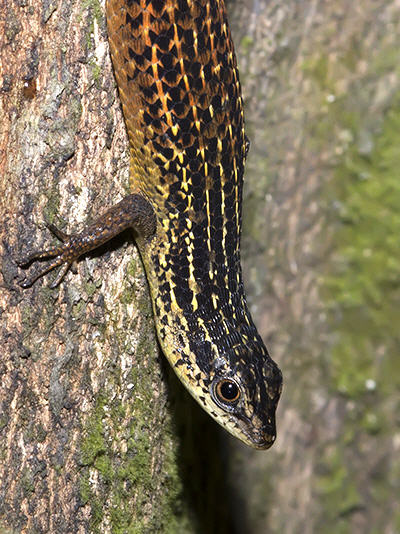
Fig 1
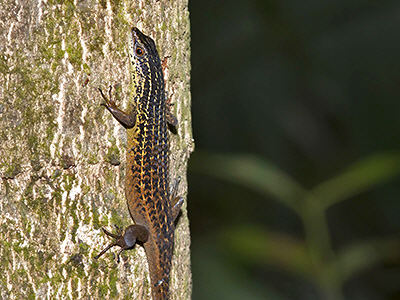
Fig 2
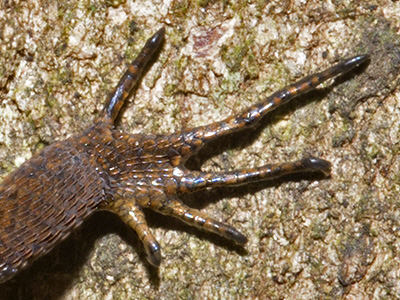
Fig 3
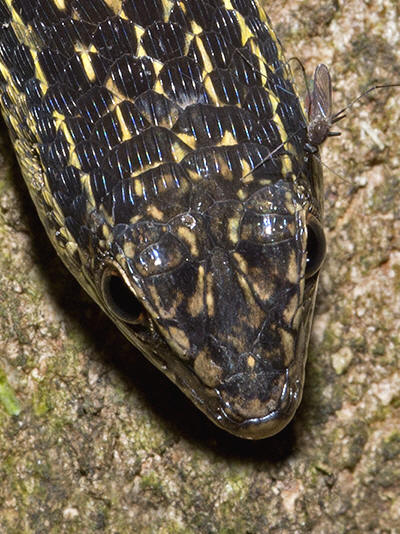
Fig 4
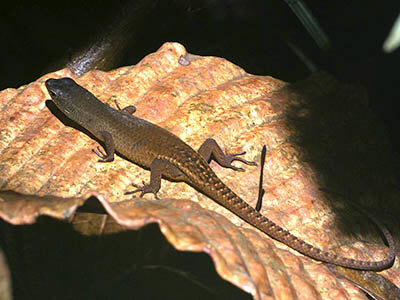
Fig 5
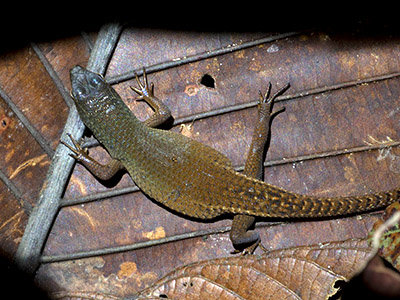
Fig 6
|
Family : SCINCIDAE
Species : Eutropis rugifera
Size (snout to vent) : 10 cm
Size (total length) : > 20 cm
This small, attractive
skink is rather uncommon. It inhabits lowland, forested areas including primary
forest,
secondary forest, swamp forest and occasionally degraded forest-edge
habitat.
It is mainly terrestrial in habits, but is a fairly adept climber and
may be found in low vegetation one or two metres above the forest floor. It
often suns itself on the trunks of large trees, typically in a
downward-facing posture. It feeds on
small invertebrates.
Its body is robust and flattened, and the head is small.
Its most obvious feature are the strongly keeled, overlapping scales, which
give the lizard a rough, matt, non-reflective appearance: most of its larger
scales bear at least 5 keels.
Its upperside is mainly dark brown towards the front of the body, and this
may grade to orange-brown towards the rear. There is a series of thin,
broken, yellowish stripes running along the full length of the body. The
flanks are yellowish-orange, and the
throat and belly are pale.
In Panti Forest, Johor, Peninsular Malaysia, a plain brown form has been
documented (Grismer, 2011). Figs 5 and 6 are of a small example of this
colour morph.
Eutropis rugifera occurs in southern Thailand, Peninsular Malaysia,
Singapore, Sumatra, Borneo, Java (and possibly Bali).
Figs 1 and 2 : Specimen from the edge of freshwater swamp forest in Singapore. This is the typical downward-facing posture.
Fig 3 : Close-up of a hind foot, showing the long toes and curved claws
which provide a strong grip on rough bark.
Fig 4 : Close up of the head showing scale arrangements. Note the
numerous, well developed
keels on all body scales. Also note the presence of a mosquito
drawing blood from just behind the left eye.
Figs 5 and 6 : Plain colour morph, lacking pale stripes, from Panti
Hutan Lipur, Johor, Peninsular Malaysia. It had an estimated snout-vent
length of just 3 cm. The skink was observed warming itself in the
morning sun in an area of freshwater swamp forest.
References :
Baker, N. & K. Lim, (Vertebrate Study Group, Nature Society
Singapore), 2008. Wild Animals Of Singapore. Draco Publishing and
Distribution Pte. Ltd.
Grismer, L. L. (2011). Lizards of Peninsular Malaysia, Singapore, and
their Adjacent Archipelagos. Their Description, Distribution, and
Natural History. Edition Chimaira, Frankfurt am Main. 728 pp.
|